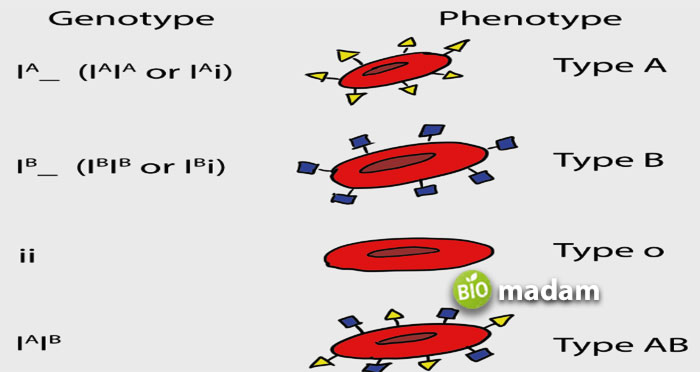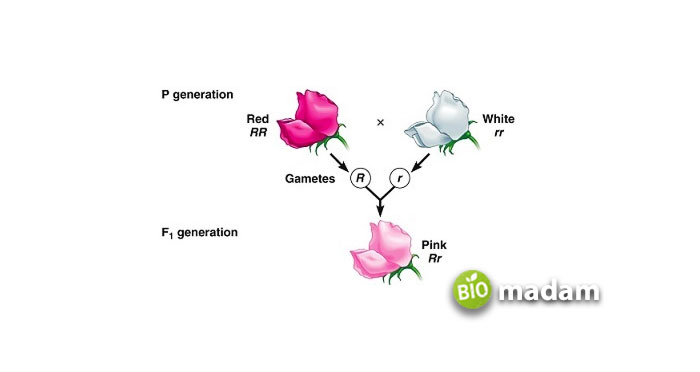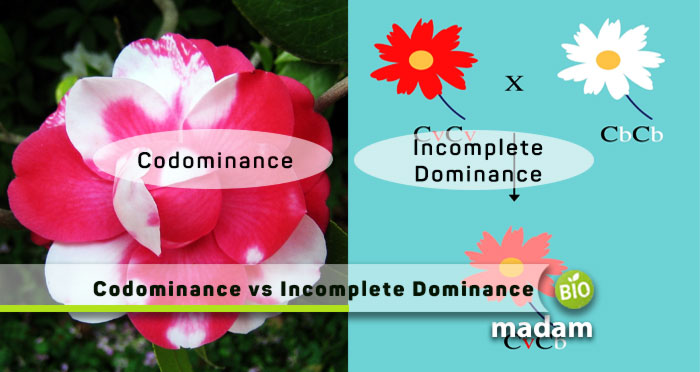Recently updated on March 2nd, 2023 at 06:32 am
Genes are the base of the characteristics of an organism. The recessive or dominant alleles determine the phenotype of an organism. These are obtained from each heterozygous parent. One of them is usually dominant over the other, masking the other characteristic completely. On the other hand, sometimes both of them might express themselves. This kind of dominance is either codominance or incomplete dominance.
Codominance means the presence of phenotype of both alleles. Contrarily, incomplete dominance refers to the blending of characteristics of the two. Both are quite distinct and easy to distinguish. Let’s tell you the fundamental differences between codominance and incomplete dominance.
Comparison Table
| Characteristic | Codominance | Incomplete Dominance |
| Definition | Existence of both phenotypes | Hybrid formation |
| Outcome | Individual expression | Blending |
| Dominance | None is dominant | One is slightly dominant |
| Hybrid | Not produced | Produced |
| Perspective | Qualitative | Quantitative |
| Examples | Blood groups | Hybrid flowers |
What is Codominance?

Codominance is defined as the occurrence of two or more alleles of a specific genotype that manifests a particular phenotype. It is common in traits with multiple alleles for the same phenotype. The alleles do not blend to produce a third variant. Instead, both phenotypes coexist simultaneously without dominating the other at all. One such example is the presence of different colors in flowers. Each color coexists in the phenotype without affecting the other’s presence. A flower having two colors simultaneously can be considered an example of codominance.
What is Incomplete Dominance?
Incomplete dominance is the name given to a phenotype when one allele on a gene is dominant on the other but not completely. It means that the alleles blend to form a different variant with both properties. The phenotypes are not expressed in individual forms. Instead, you observe a new hybrid. Codominance is a qualitative characteristic, while incomplete dominance is a quantitative perspective of the two different phenotypes.
Let’s take the example of two-parent flowers with different colored phenotypes. While they expressed both colors in codominance, one color slightly dominates the other in incomplete dominance. The red and white parent flowers combine to form a pink progeny with incomplete dominance. The red phenotype is dominant over white, but not completely.

Similarities between Codominance and Incomplete Dominance
- Codominance and incomplete dominance obey the non-Mendelian inheritance patterns.
- They occur in heterozygous individuals.
- Both alleles in these types of phenotypic expression are dominant.
- None of the parental alleles are completely dominant over the other.
Differences Between Codominance and Incomplete Dominance
Definition
Codominance
Codominance refers to the existence of phenotype of both phenotypes at once.
Incomplete Dominance
Incomplete dominance means that one phenotype is dominant over the other but not completely.
Outcome
Codominance
Both of the phenotypes exhibit in the offspring without one shadowing the other.
Incomplete Dominance
Whereas the phenotypes do not express individually. Instead, they blend to form a new phenotype with properties of both parent alleles fused.
Dominance
Codominance
Neither of the two alleles is dominant over the other in codominance.
Incomplete Dominance
However, one of the alleles is somehow dominant over the other in incomplete dominance.
Hybrid
Codominance
The alleles do not produce a new hybrid as the alleles coexist.
Incomplete Dominance
Conversely, the alleles combine to produce a hybrid between the parent alleles.
Expression
Codominance
You can see both the parental allele expression in codominance.
Incomplete Dominance
You cannot see any of them individually in the offspring. The characteristics of both parent alleles blend to form a hybrid.
Perspective
Codominance
Codominance is a qualitative perspective of multiple gene expressions.
Incomplete Dominance
On the contrary, incomplete dominance is a quantitative approach to incompletely dominant alleles.
Examples
Codominance
Blood groups in humans (A, B, AB, O) are codominant. None of them dominates the other. You can observe all of them in different individuals.
Incomplete Dominance
Mirabilis jalapa flowers exhibit incomplete dominance as the red and white parent flowers give rise to a pink hybrid progeny.
FAQs
What is dominance?
Dominance refers to the relationship between two alleles of heterozygous individuals. One of these alleles might be completely or incompletely dominant over the other. Sometimes, none of them is dominant or recessive. The expressed phenotype is called the dominant trait. On the other hand, the recessive trait is the suppressed phenotype.
What are multiple alleles?
Normally, each phenotype has two alleles, one of which may be dominant over the other. However, some phenotypes have more than two alleles. They are known as multiple alleles.
What is incomplete dominance in Punnett square?
An incomplete dominance Punnett square is used to show the hybrid between two alleles.
The Bottom Line
Codominance and incomplete dominance contribute vastly to the study of phenotypes. Initially, all alleles were considered dominant or recessive. But, codominant and incompletely dominant alleles in heterozygous organisms are dominant. None completely dominates the other. Either they coexist in codominance, or one is slightly dominant over the other during incomplete dominance. Blood groups in humans are codominant, whereas hybrid flowers are examples of incomplete dominance.

Hi, my name is Eva. I am currently practicing as a clinical social worker, that being my childhood desire. As a licensed therapist holding MPhil in Clinical Psychology, I am now on biomadam to provide the natives with the best family advice! Do you have any questions? See you in the comment section.

